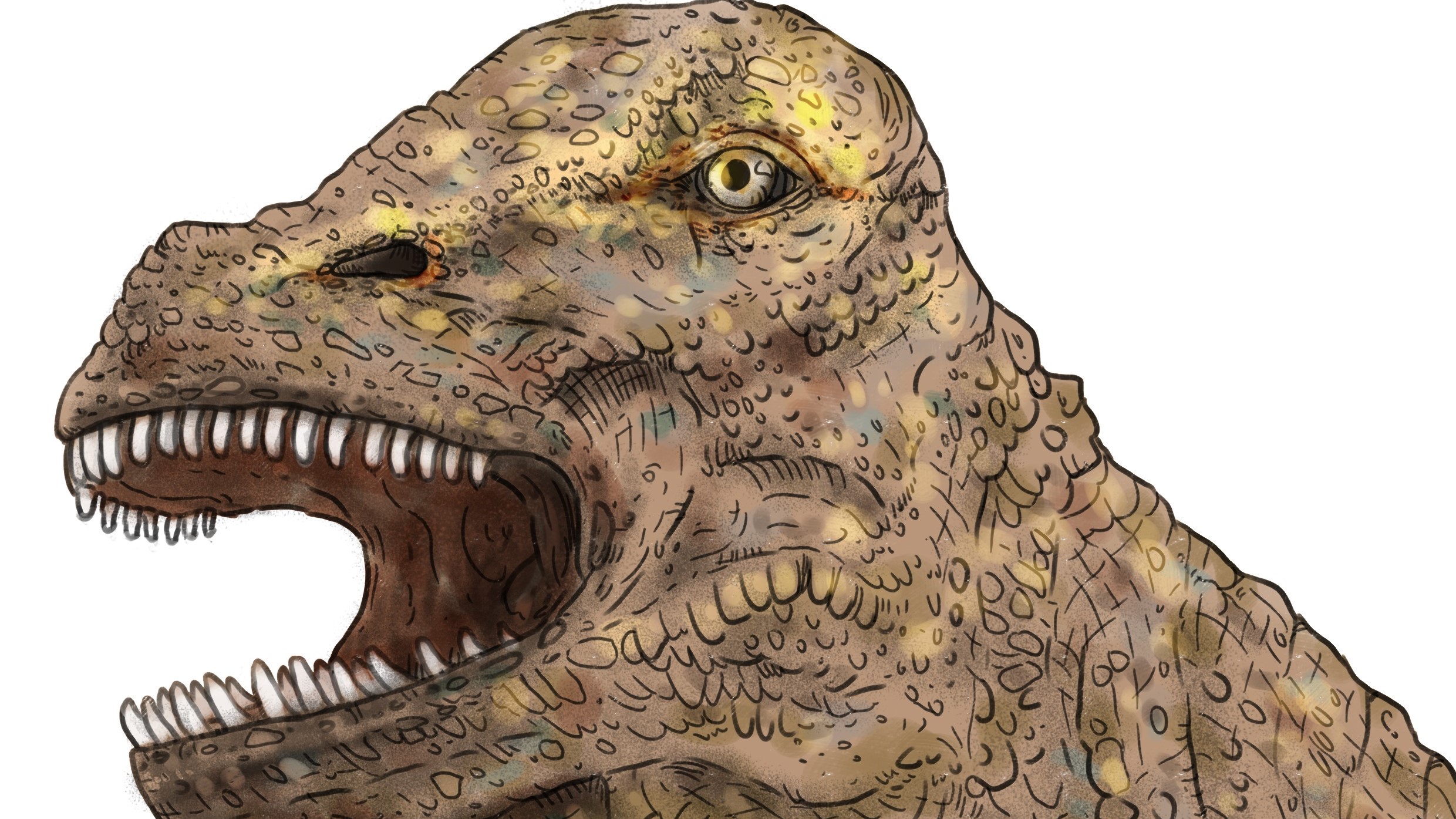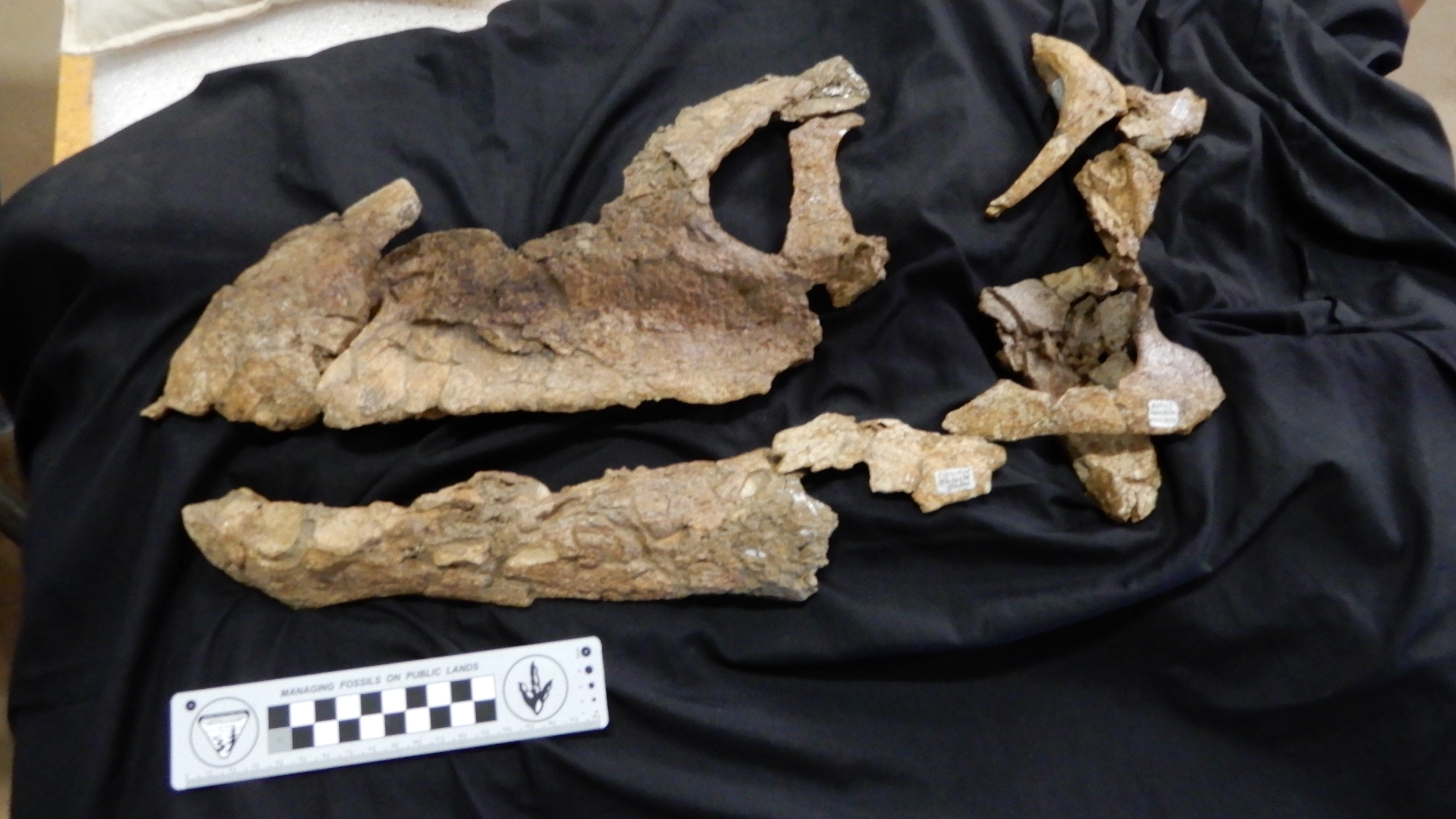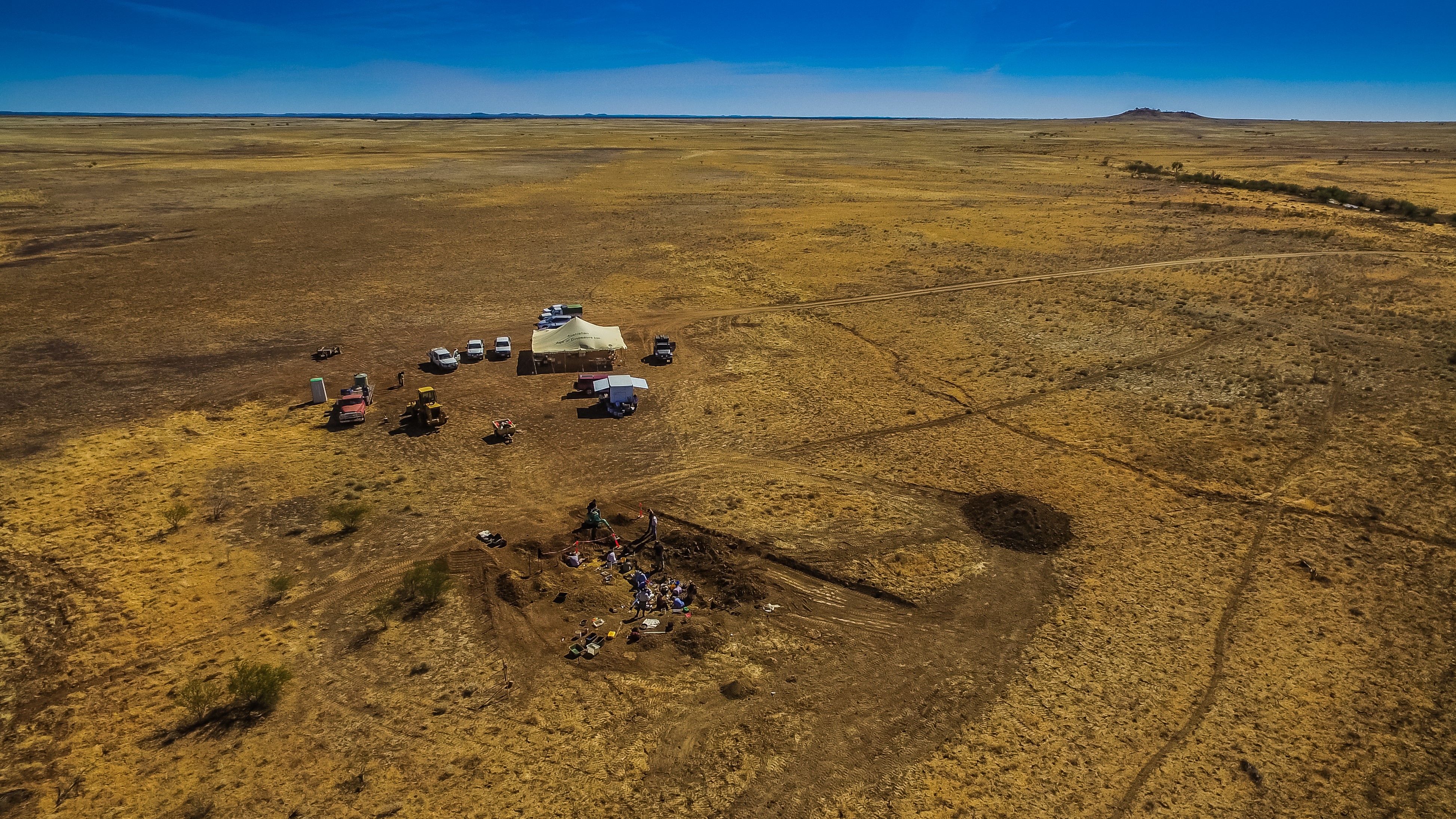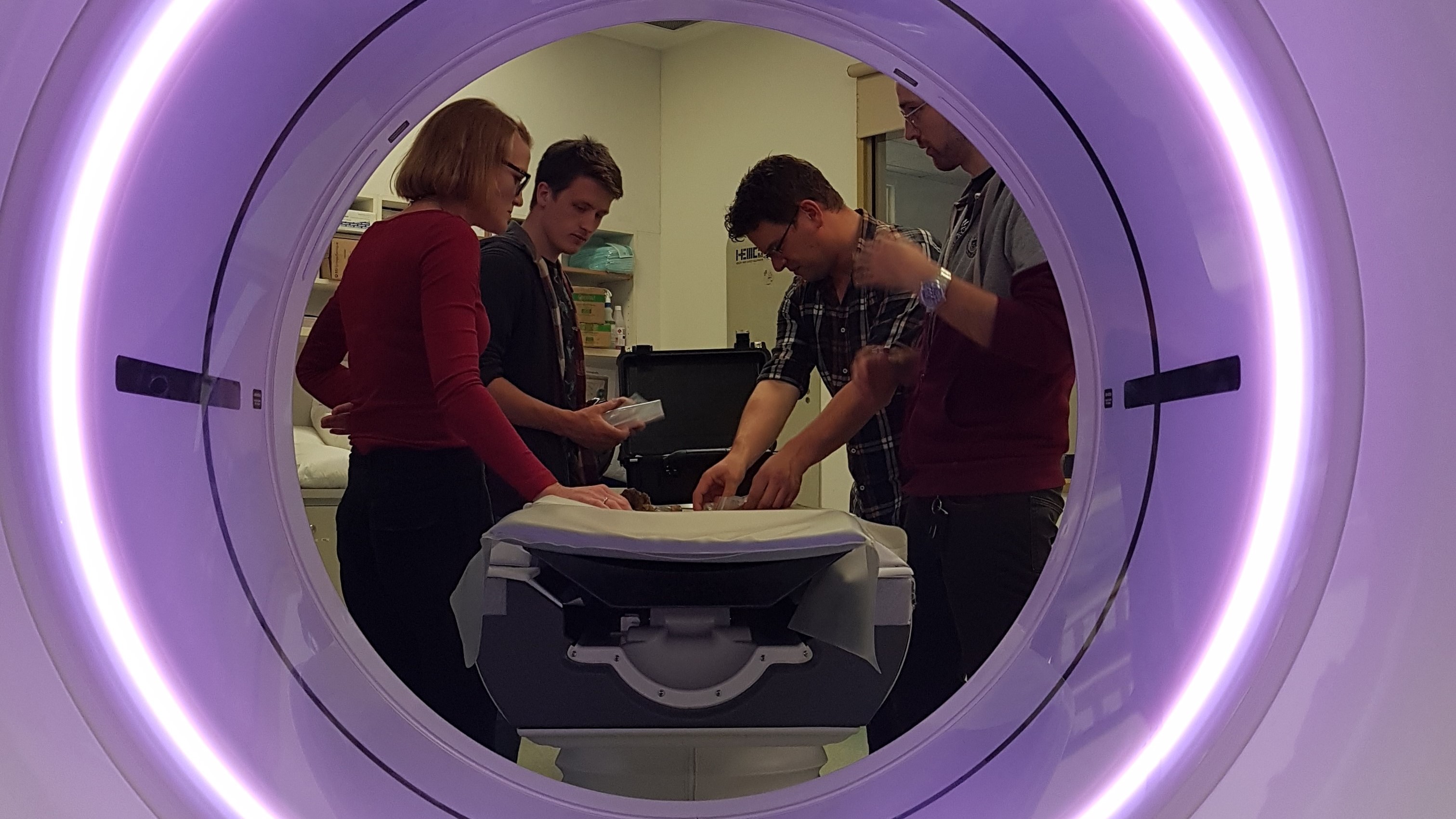95 million-year-old land bridge across Antarctica carried dinosaurs between continents
The first-ever near-complete sauropod skull found in Australia is remarkably similar to fossils from South America, which suggests that dinosaurs roamed across ice-free Antarctica.

A nearly 100 million-year-old, exceptionally well-preserved sauropod skull discovered in Australia may show that dinosaurs trudged across Antarctica from South America to Australia, researchers have revealed.
The near-complete sauropod skull belongs to a species called Diamantinasaurus matildae. Sauropods are known for their extremely long necks, with one dinosaur's neck stretching farther than a school bus. D. matildae was also a titanosaur, the only group of sauropod dinosaurs to live right until the end of the Cretaceous (145 million to 66 million years ago) before the nonavian dinosaurs went extinct.
Paleontologists excavated the specimen in 2018 from a sheep ranch northwest of Winton, in Queensland, Australia, and nicknamed it "Ann." D. matildae was as long as a tennis court (78 feet or 23.77 meters) and weighed around 27.5 tons (25 metric tons), three times more than Tyrannosaurus rex. The fossils look strikingly similar to bones unearthed in Argentina, which prompted researchers to think that sauropods journeyed between South America and Australia, via Antarctica.
"In analyzing the remains, we found similarities between the Ann skull and the skull of a titanosaur called Sarmientosaurus musacchioi, which lived in South America at about the same time as Diamantinasaurus lived in Queensland," Stephen Poropat, a paleontologist at Curtin University in Perth, Australia, and lead author of a new study into the fossils, said in a statement. "We suggest that sauropods were traveling between Australia and South America, via Antarctica, during the mid Cretaceous."
Related: Maximus, 'one of the best' T. rex skulls on record, could fetch $20 million at auction

In the hothouse world of the Cretaceous, Antarctica was blanketed with lush forests and vegetation. Scientists already knew that sauropods roamed the now-frigid landmass, after the first long-necked-dinosaur fossil in Antarctica was discovered in 2011. Some scientists had already theorized that these behemoths used Antarctica to bridge continents. At the time, Australia, New Zealand, Antarctica and South America were joined and formed the last remnant of the supercontinent Gondwana, according to the Australian Museum.
Now, in a study published Wednesday (April 12) in the journal Royal Society Open Science, researchers compared the best-preserved sauropod skull found to date in Australia with others from across the world.
Sign up for the Live Science daily newsletter now
Get the world’s most fascinating discoveries delivered straight to your inbox.

Using detailed scans of Ann's remains, the team detected remarkable similarities with a Sarmientosaurus skull that was discovered in the Chubut province in southern Argentina and described in a 2016 study in the journal PLOS One. "These similarities include details of the braincase, the bones forming the back end of the skull near the jaw joint and the shape of the teeth," Poropat said.
Researchers already suspected that these two dinosaurs were closely related, but until now, they lacked the evidence to back it up. "The new skull shores up the idea in a big way," Poropat wrote in The Conversation. "Bone for bone, the skulls of Diamantinasaurus and Sarmientosaurus are extremely similar."

Dinosaur skulls are an extremely rare find, according to the study. Aside from a few teeth, Ann's skull is only the second sauropod skull found in Australia, following the discovery in 2016 of a partial cranium belonging to D. matildae. That's because the heads of sauropods were small relative to their body size and were made up of tiny, delicate bones and decomposed more rapidly than sturdy limbs, Poropat wrote.
“This is a remarkably detailed and information-packed paper," Matthew Lamanna, a paleontologist at the Carnegie Museum of Natural History and co-author of the 2016 study, told Live Science in an email. "The resemblances between the skulls of Diamantinasaurus and the similarly aged Sarmientosaurus from southern South America are pretty striking, and add further support for the hypothesis that titanosaurs moved between Australia and South America during the mid-Cretaceous, presumably via Antarctica."

Sascha is a U.K.-based staff writer at Live Science. She holds a bachelor’s degree in biology from the University of Southampton in England and a master’s degree in science communication from Imperial College London. Her work has appeared in The Guardian and the health website Zoe. Besides writing, she enjoys playing tennis, bread-making and browsing second-hand shops for hidden gems.









